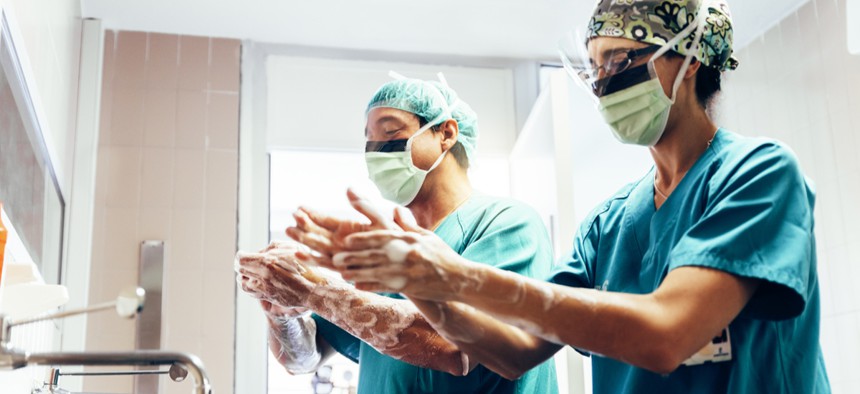Supercomputing System Fighting COVID-19 Gets Upgrade

santypan/Shutterstock.com
AMD made the contribution to nearly double the system’s performance capabilities.
A Lawrence Livermore National Laboratory supercomputing system powering research to fight COVID-19 is in for a major upgrade that will nearly double its peak performance.
Under an agreement disclosed this week between Lawrence Livermore, Penguin Computing and AMD, the latter chip-making company will provide the Corona system with accelerators optimized for large-scale deep learning, which will enable it to exceed 4.5 petaFLOPS, or floating point operations per second, of peak compute power.
“By expanding the total system compute performance, we expect researchers will be able to more quickly run more simulations, advancing the understanding of the underlying virus and how to combat it,” an AMD spokesperson told Nextgov Wednesday.
Before the novel coronavirus pandemic, experts at the lab used the Corona system—named for the total solar eclipse in 2017, not the virus family—for unclassified science applications. Once COVID-19 triggered a worldwide health emergency, researchers began harnessing the supercomputing system “to virtually screen, design and validate antibody candidates” for SARS-CoV-2, the virus that causes COVID-19, and “to simulate the interaction of small molecules with the virus’ proteins to discover possible antiviral compounds.”
The lab’s Deputy Associate Director for Programs Jim Brase said the cutting-edge enhancements will allow those teams to “go faster, with more throughput.”
“We’ll have more resources, so we can run more cases and potentially get to new designs for both antibodies and small molecules faster, that may lead to better treatments,” Brase said. “They’ll also enable some of our new software, both for simulation and machine learning applications, to run more efficiently and better.”
The COVID-19 High Performance Computing Consortium will also use the improved system, enabling researchers from anywhere to tap into Corona for free compute time to support their own work to combat the pandemic. Spearheaded in late March by the White House Office of Science and Technology Policy, Energy Department and IBM, the consortium aims to accelerate research around COVID-19 and ultimately help beat it. AMD officially joined the consortium April 6.
The technology company’s contribution of the processors to the national lab was an “in-kind” exchange, meaning there is no financial cost to Lawrence Livermore for AMD’s offering. Instead, the company is securing compute cycles on Corona to support a range of purposes.
“The incentive to AMD is the ability to provide compute cycles to COVID-19 research as well as for our development work,” the company’s spokesperson said.
The official also made it a point to note that the additional compute capacity from AMD is permanent, meaning the upgraded resources will be available beyond the COVID-19 pandemic.
“How that performance is applied is up to the team at LLNL,” the spokesperson said. “Short term, our goal is to arm the research community with the resources they need to accelerate the fight against the global pandemic.”






